Dad's Flying
by Mike Thompson, 1/2/2012
Dad grew up and learned to fly during what's called the Golden Age of Aviation, between the end of World War I (1918) and the beginning of World War II (1939). During this period airplanes advanced from slow, wood-and-fabric biplanes to fast, streamlined, metal monoplanes, creating a revolution in both civilian and military aviation. Dramatic feats such as Lindberg's trans-Atlantic flight captured the public imagination, and long-distance flights for commercial travelers became possible for the first time.
Dad was an experienced pilot by the time America entered World War II, upon the Japanese attack on Pearl Harbor on December 7, 1941. His first military flying job was as a civilian instructor in Pendleton, Oregon. There he trained beginning pilots the basics and then aerobatics: rolls, loops, stalls, and other maneuvers. Mom said that he was flying open-cockpit biplanes at that time (most likely Stearman PT-17 trainers) and that Dad took her up for a short hop once. He and Mom are pictured here in 1942 next to a Timm Aerocraft 2AS low-wing monoplane, another early 1940s trainer.
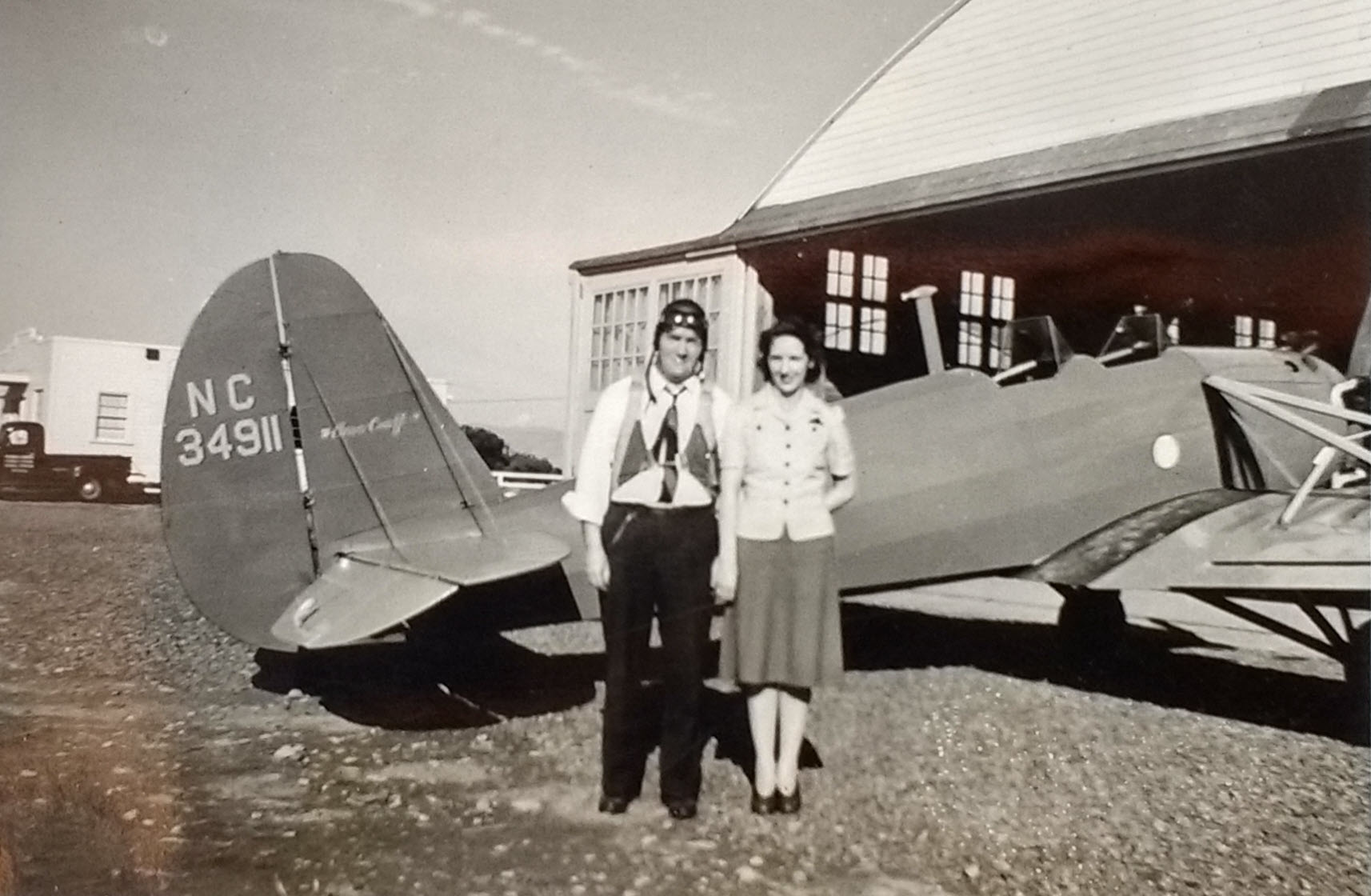
His next assignment was to ferry combat aircraft around the United States from the plants where the airplanes were manufactured to points of departure for shipment overseas. I have a journal that he kept during the period, and the following are some of his early entries.
December 18, 1942: Was sworn in the Ferry Command today as Civilian Pilot.
December 19, 1942: Received my first orders today, have a BT-13A to deliver to Taft, California. Only a hop of 100 miles, but it will be quite a thrill - after the planes I have been flying a BT is a lot of airplane. I won't have any trouble with the ship, but the radio equipment is all so much Greek to me.
February 3, 1943: It is 2nd Lt. Thompson now - received my commission today.
February 4, 1943: Palm Springs for P-51 and P-39 pursuit transition. This is a ship I have always wanted to fly. I had 1 hour dual in the back of an AT-6 today.
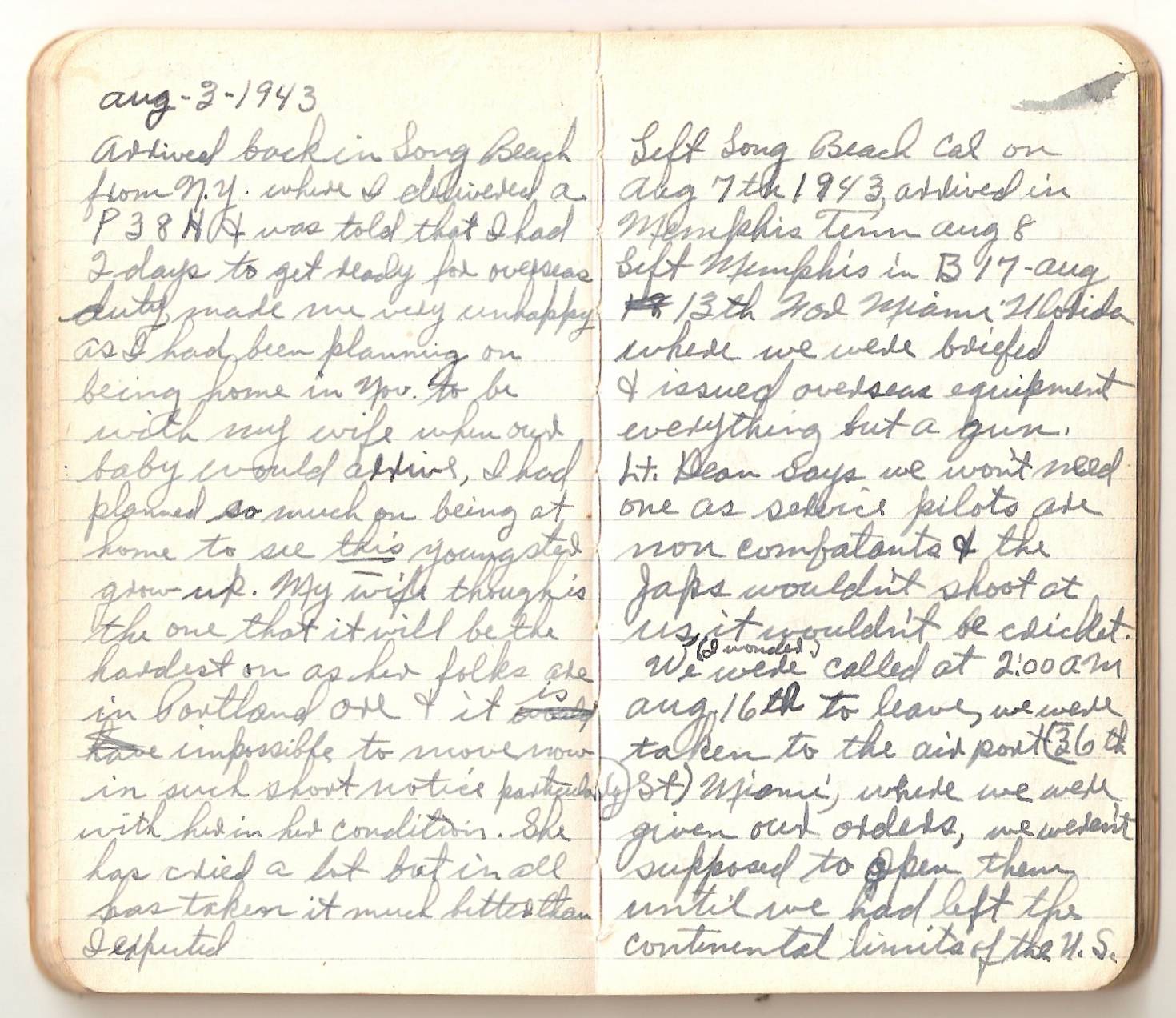
So quickly Dad switched from flying biplane trainers to flying the very hottest aircraft built during WW II: P-51s, P-38s, A-20s, and the like. Then came another new assignment.
August 3, 1943: Arrived back in Long Beach from New York, where I delivered a P-38H, and was told that I had 2 days to get ready for overseas duty. Made me very unhappy, as I had been planning on being home in November to be with my wife when our baby would arrive. I had planned so much on being at home to see this youngster grow up. My wife though is the one that it will be the hardest on as her folks are in Portland, Oregon and it is impossible to move now in such short notice, particularly with her in her condition. She has cried a lot but in all has taken it much better than I expected.
A month later he was in India flying B-25s. He's in the front row on the left in this picture. His flying in Asia took him to India, to Egypt, to Iran, and to China over "The Hump", the famous Allied air route over the Himalaya Mountains.
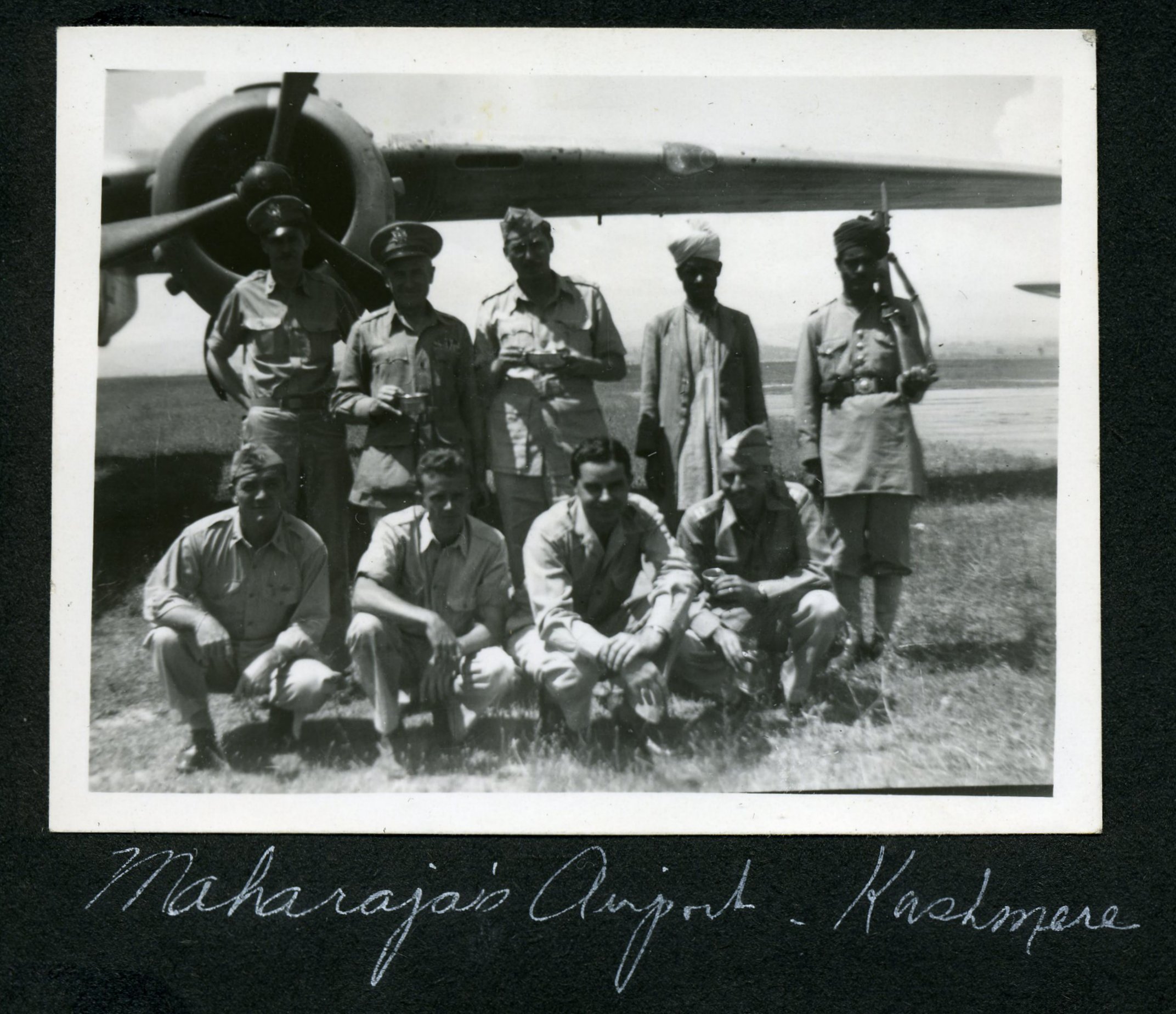
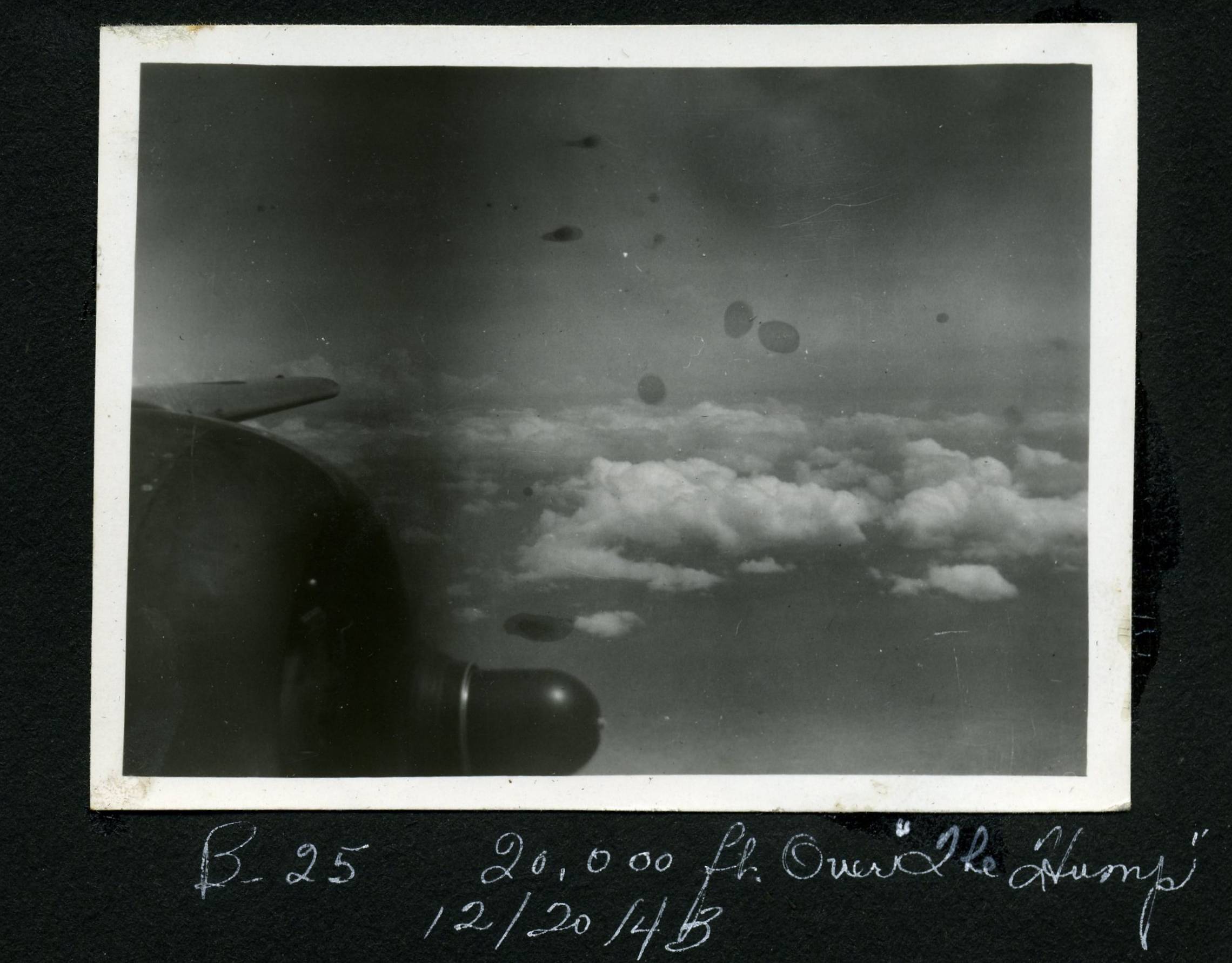
1-16-44 Am flying at 20,000 ft. going over the famous "Hump" as I write this. This is the supply line to China. The mountains are very high & weather is nearly always bad. I have been flying for nearly 2 hrs. now on instruments. Should be in Kunming, China in about 30 min.
1-17-44 Am at Chengtu, China now. It is the largest city in Free China. Had to come over at 18,000 ft. on top & let down thru 10,000 ft. of overcast.
1-19-44 4 PM - Just got up. We flew straight back from Chengtu. 13 hrs. air time, had to come over the Hump after dark & flew at 23,000 ft. It was 40 below zero & I have calluses where my knees knocked together. I stopped in Chabuta and found out that the Japs shot down 5 ships on the Hump the day I went over...
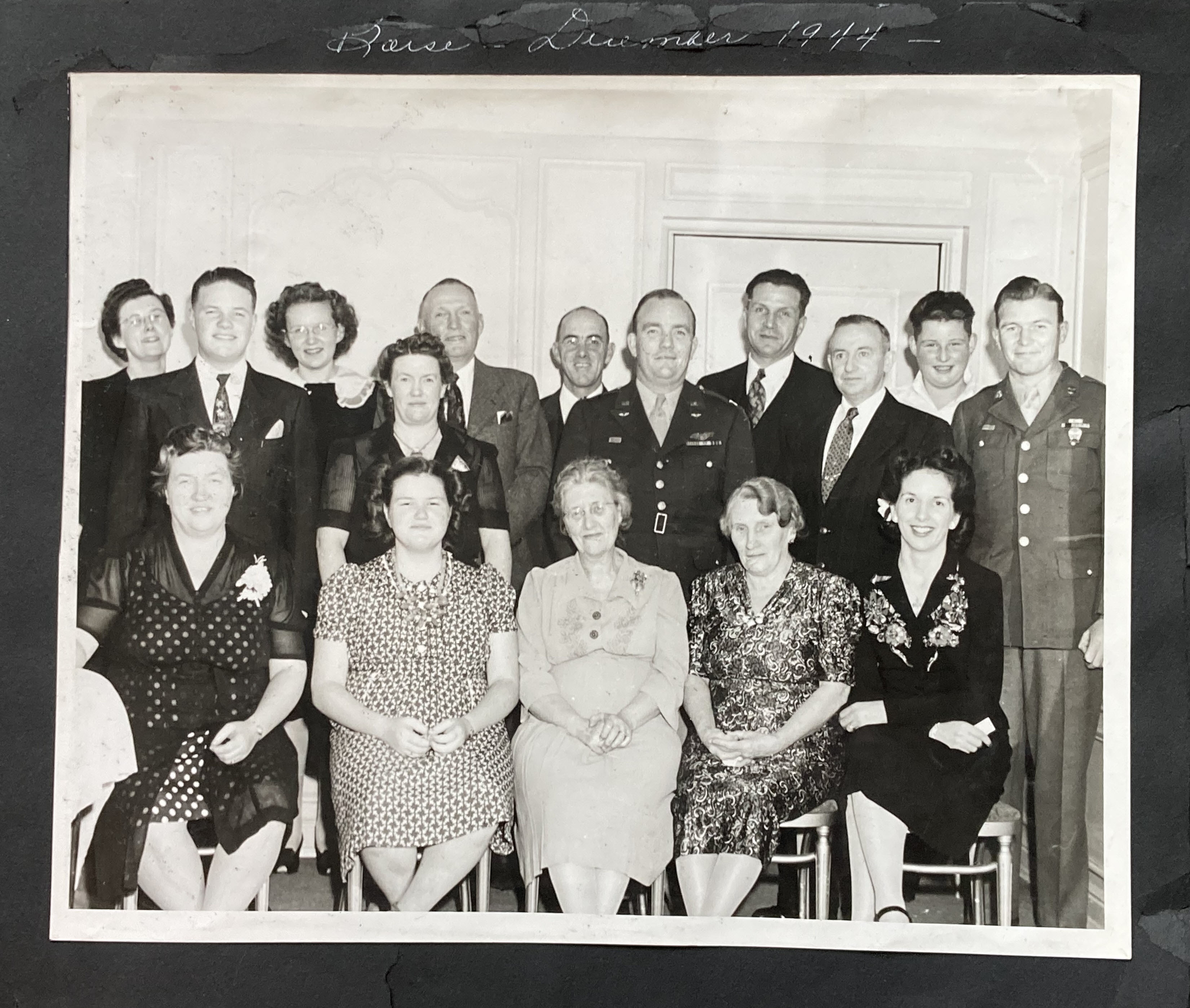
The photo above is titled "Boise, December 1944" in Mom's handwrighting. This reunion would have happened while both Dad and his brother, Bob were home on leave from the Army Air Force, and both are in uniform.
[Front row, sitting, left to right]
- Iona Neal (Thompson): Dad's eldest sister
- Pat Neal: daughter of Iona and Albert
- Ona Leonardson (Hickman): Dad's mother's sister
- Eva Thompson (Hickman): Dad's mother, my grandmother
- Agnes Thompson (McFadden): Dad's wife, my mother
[Middle row, standing, left to right]
- Dale Neal: daughter of Iona and Albert
- Frances Thomson (Thompson): Dad's sister
- Albert "Tommy" Thompson: My Dad
- Peter Thomson: Frances' husband
- Bob Thompson: Dad's younger brother
[Back row, standing, left to right]
- Sarah Richardson (Willis): niece of Eva Thompson (Hickman), daughter of Nellie Willis (Hickman)
- Floydene Richardson: daughter of Sarah and Floyd
- Roy Leonardson: husband of Ona Leonardson (Hickman)
- Albert Neal: husband of Iona Neal (Thompson)
- Floyd Richardson: husband of Sarah Richardson (Willis)
- Danford Richardson: son of Sarah and Floyd
In December of 1944, World War II was not yet over - the Germans surrendered in May of 1945, the Japanese in August of 1945. Dad would have just returned from a tour of duty flying a B-25 in India, China, and the Middle East. His brother, Bob spent almost the entire war serving as an airplane mechanic in the South Pacific.
Bob was in the barracks near Hickam Field when the Japanese attacked Pearl Harbor on December 7, 1941, bombing and strafing the airfield. When he and his company ran to the airfield to save as many planes as possible, the Japanese planes returned and strafed the barracks. The car that he and a friend had bought was hit by a 20 millimeter shell and destroyed. He was in the Solomon Islands during the fighting there on and around Guadalcanal, and I remember Uncle Bob's stories of what it was like, including living in a tent during a period when there were nightly bombings by a lone Japanese plane, intended to harass the American soldiers and deprive them of sleep.
Dad stayed in the Army Air Force for a while after WW II ended, flying a B-25 for a Colonel Abbot, and was stationed in the Chicago area at that time. After leaving the service, Mom remembered Dad picking up a new car from an automobile factory out there and then driving it cross-country to the west coast. Cars were in great demand after the war and were hard to come by, which may be what led to his next line of work. In between flying jobs Dad sold cars. He worked for Wikstrom Motors, the Buick dealer in Yakima, Washington. The owner, Dick Wikstrom, was a private pilot himself, so that would have been a strong connection between the two of them.
In the late 1940's Dad took a flying job with Standard Oil in Peru. They were prospecting for oil at that time in the upper Amazon. He flew a Grumman Goose, carrying geologists over the Andes Mountains into remote locations, while Mom, Bobby, and Susan stayed in Lima. The plane he flew is shown here on the river, next to a couple native dugout canoes.
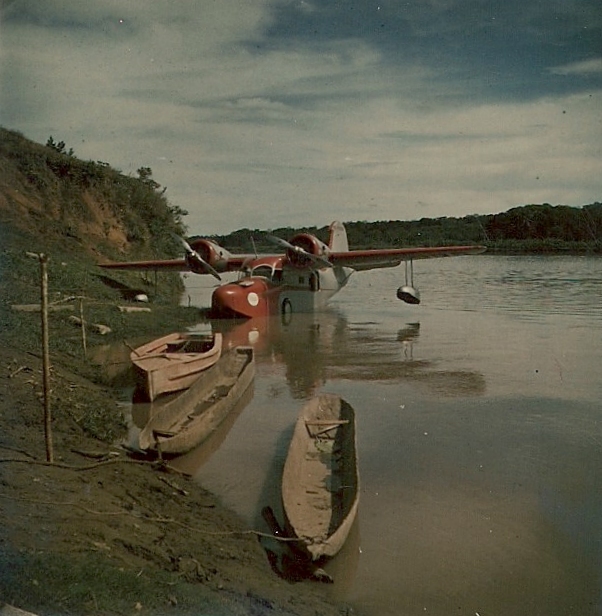
After returning to Yakima, where Mom's family had settled after coming west from North Dakota in 1936, Dad found his next flying job in Alaska. That job led to a long-term position as a bush pilot with Wien Airlines, owned by pioneer aviator Noel Wien. In Alaska Dad flew twin-engine Beech 18s and single-engine DeHavilland Beavers and Cessnas. For runs to remote locations, the planes were equipped with floats in the summer and skis in the winter. He flew supplies to miners and native villages, and carried military personnel, hunters, and passengers throughout the north. During those years Mom, Bobby, Susan, and I sometimes lived in Yakima, sometimes in Alaska, including stays in Nome and Fairbanks.
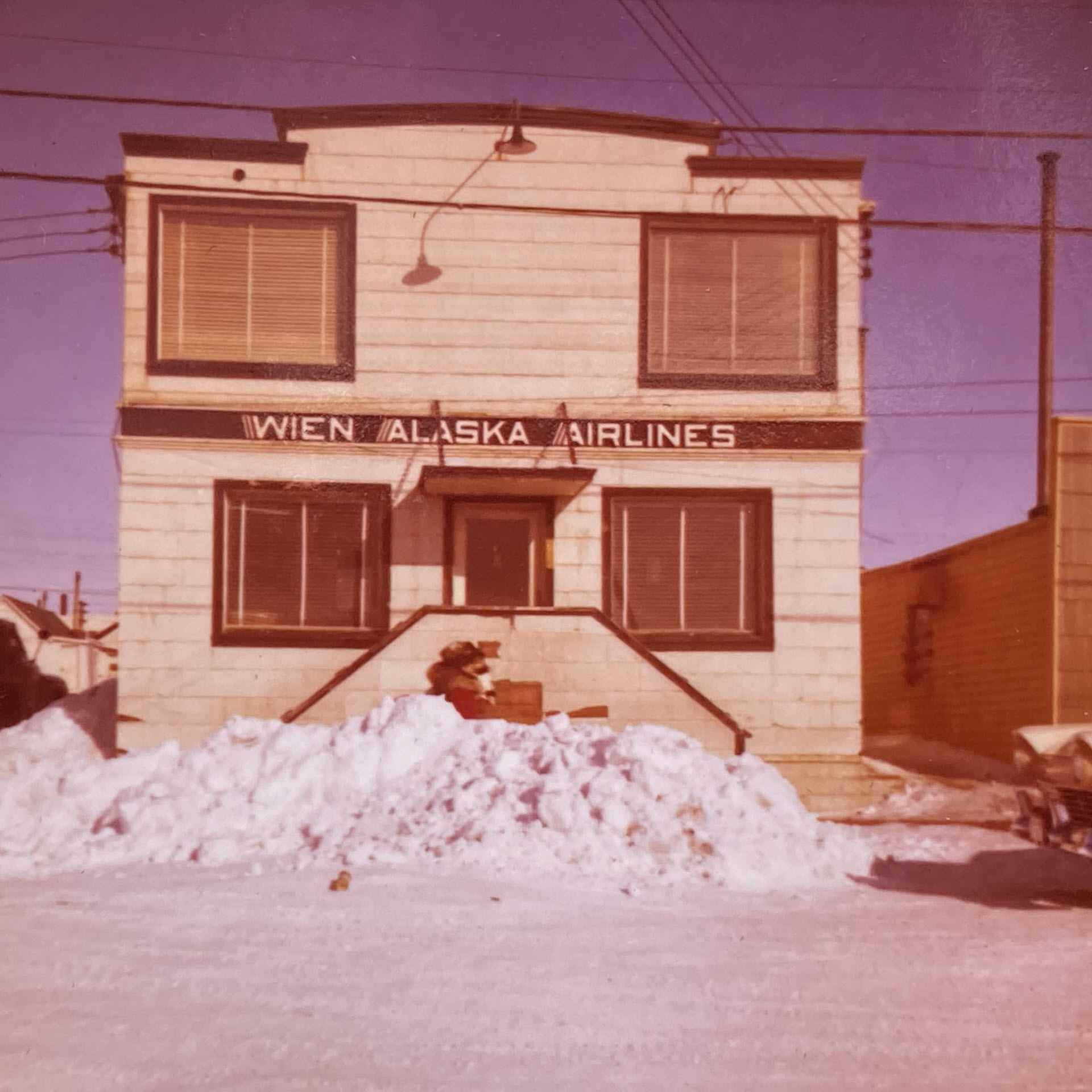
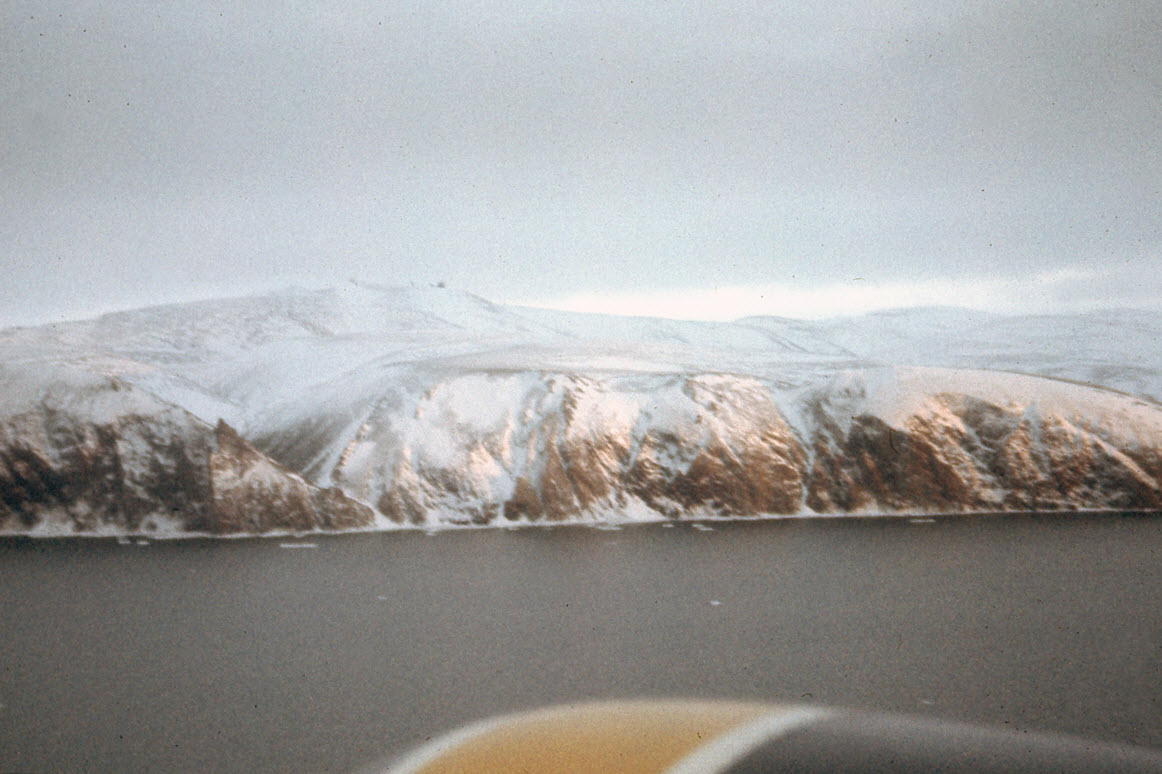
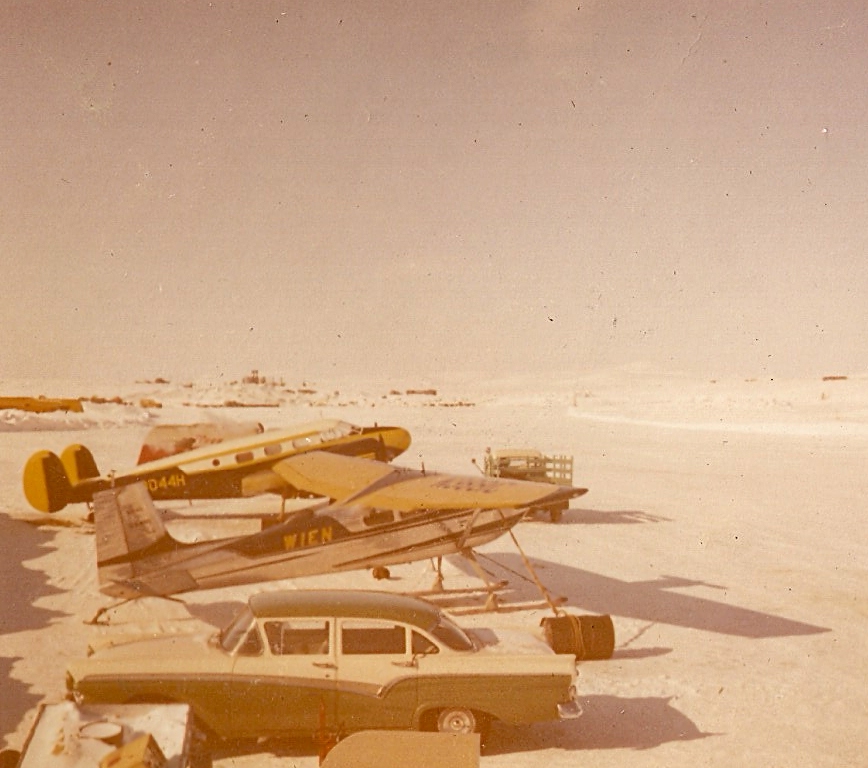
This Thompson family photo was taken in our living room in Yakima when Dad and Bobby were down from Alaska. It would be the last time that we would all be together.
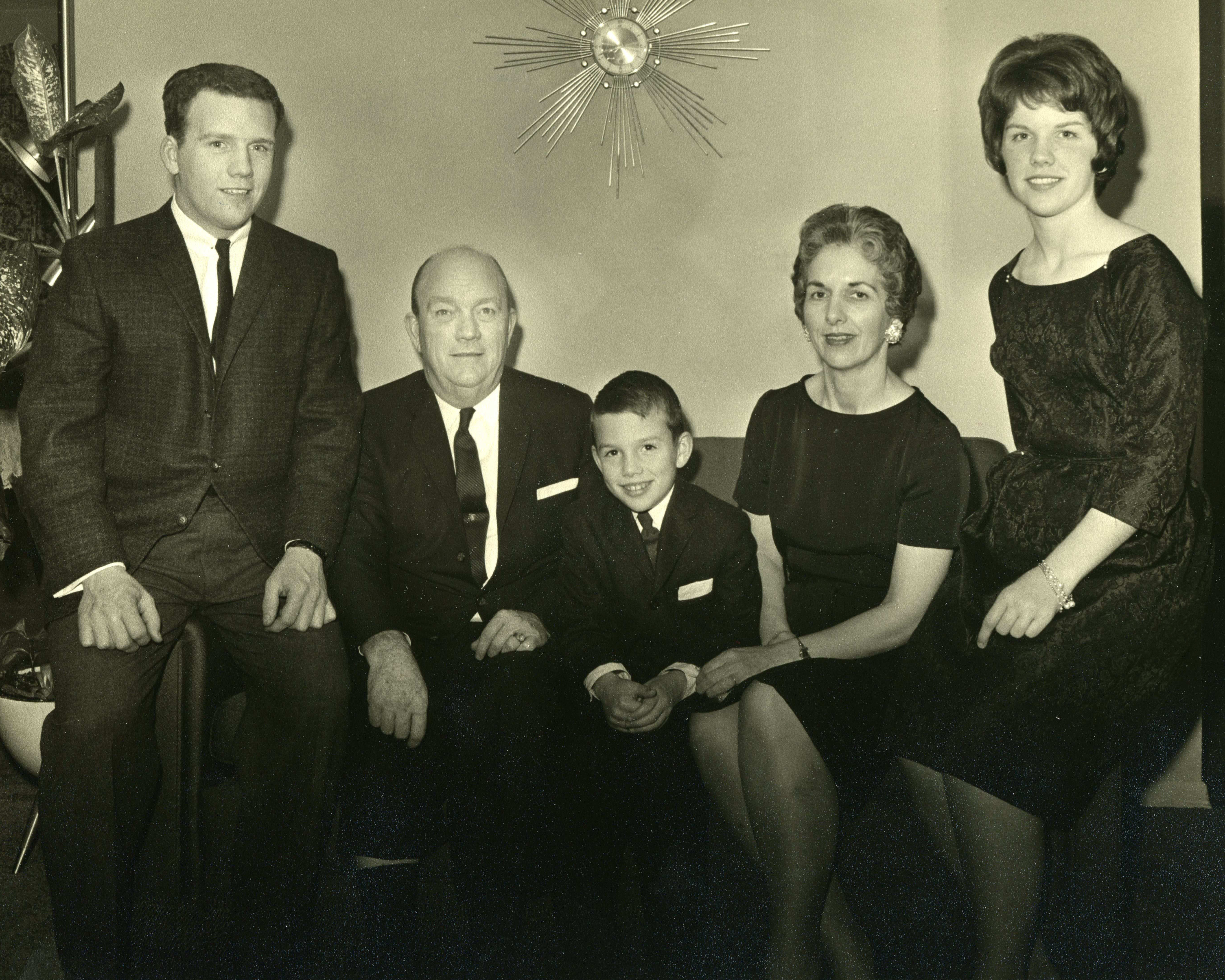
In January of 1963 Dad was flying a Beech 18 to Barter Island, carrying military personnel who were working the the DEW Line (Distant Early Warning) radar system. In his book "The Last of the Bush Pilots", Harmon Helmericks talks about that night.
Ice fog hung in the air as I finished my chores and stepped into our snug home on the Arctic coast. It was near -50 degrees. Martha was preparing our dinner and I dumped a sack of wood into the bin for the fireplace.
"I'm glad I'm not looking for the lights of home in this stuff," I told Martha.
The radio had been crackling and humming as there wasn't much airline traffic, but it suddenly came to life as a pilot somewhere out in the night pressed his microphone button, and then a voice cut through the frosty air. "Wien Barter Island Beachcraft C-18 landing Barter Island two minutes." It was Tommy Thompson on the chartered flight along the Arctic coast returning after a long day. We know the pilots' voices and mannerisms in using their radios.
"Roger, Beachcraft C-18 landing Barter Island two minutes..." and the Barter Island operator went on to give the weather conditions. They were identical with ours, but of course Tommy Thompson was on instruments and the radio would help him in until those first lights of the runway appeared.
Martha went on cooking. I picked up Mark and the clock ticked away. The next sound from the radio would be Tommy Thompson's report that he was on the runway.
"Beachcraft C-18, what is your position?" we heard the Barter Island operator ask. No answer. Martha and I looked at one another. We knew. Tommy Thompson was dead. Somewhere out in the ice-fog-choked darkness where -50 degrees held the land in an unrelenting grip, two lines had met and crossed, X marked the spot.
The voice on the radio was insisting now. "Beach C-18, what is your position?...What is your position?" Then silence; there was no use calling now. It was time for listening and waiting.
They found the ship in the Arctic winter's midday twilight. It lay a few miles from the end of the runway and all were dead except for one passenger who had survived the crash and the -50-degree cold. He had been piled under the rest and lived.
The story was plain to read in the snow. Tommy Thompson had made a long flight that day and was now nearing home, letting down to land. The altimeter setting changes with the air pressure and it is affected by the local barometric pressure and by the altitude of the airplane. Somehow Tommy's altitude had read perhaps five hundred feet when he really was at ground level. In that white world he couldn't see a thing and his first hint of trouble was when the propellers nicked the ground. Instinctively he had come back on the wheel to climb away from there and came on with fuel power. The ship had shot up away from the ground and the engines responded with a roar. That was the right thing to do but for one factor. The tick of the propellers on the ground had bent the blades back and their usefulness was gone. They were powerless to pull and so the ship shot upward; instead of climbing as it should have with engines at full throttle, it stalled and plunged nose-first into the frozen beach. Had Tommy been flying a ski airplane he would have had no problems for the skis would have touched first. The retractable-wheeled Beach had allowed the propellers to hit first.
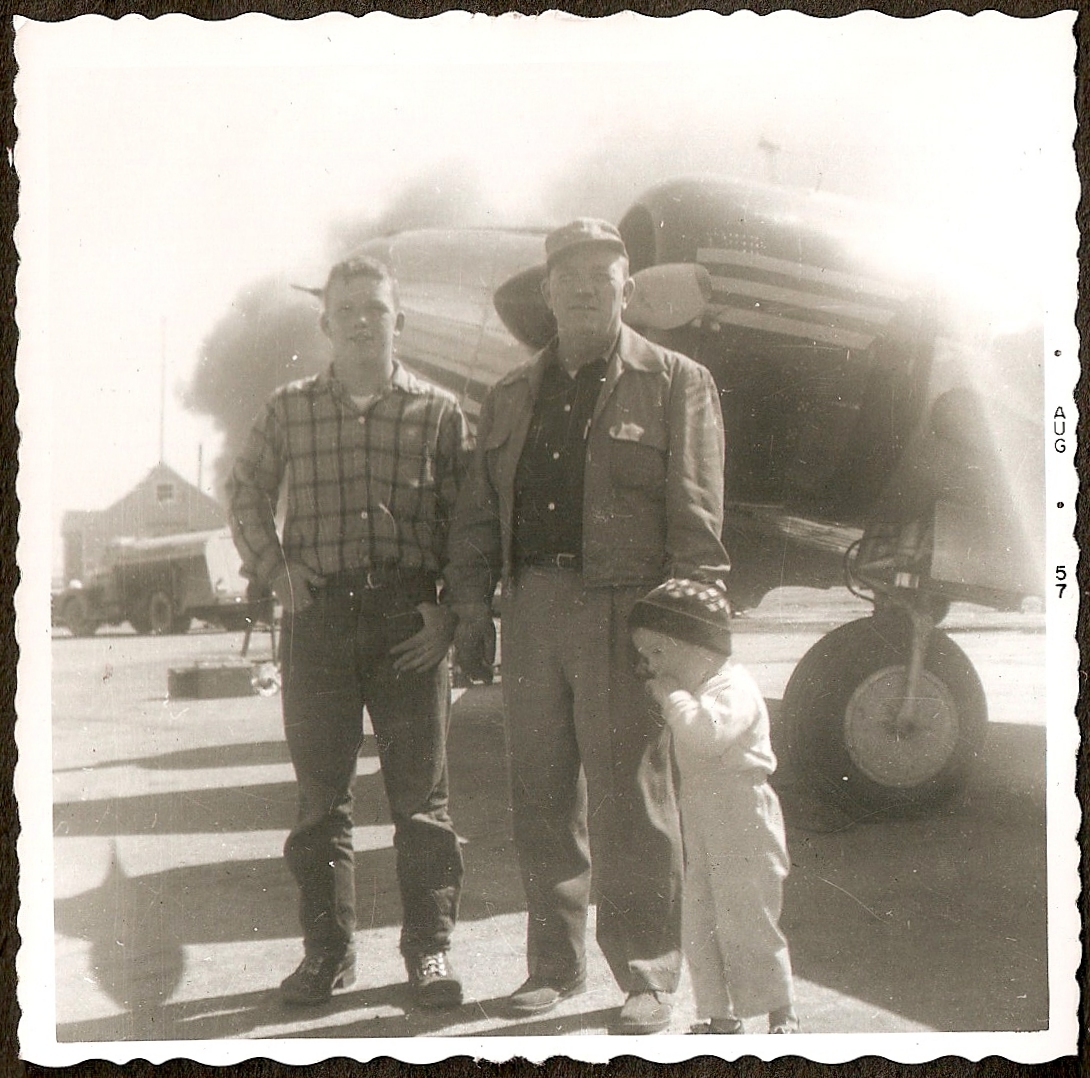
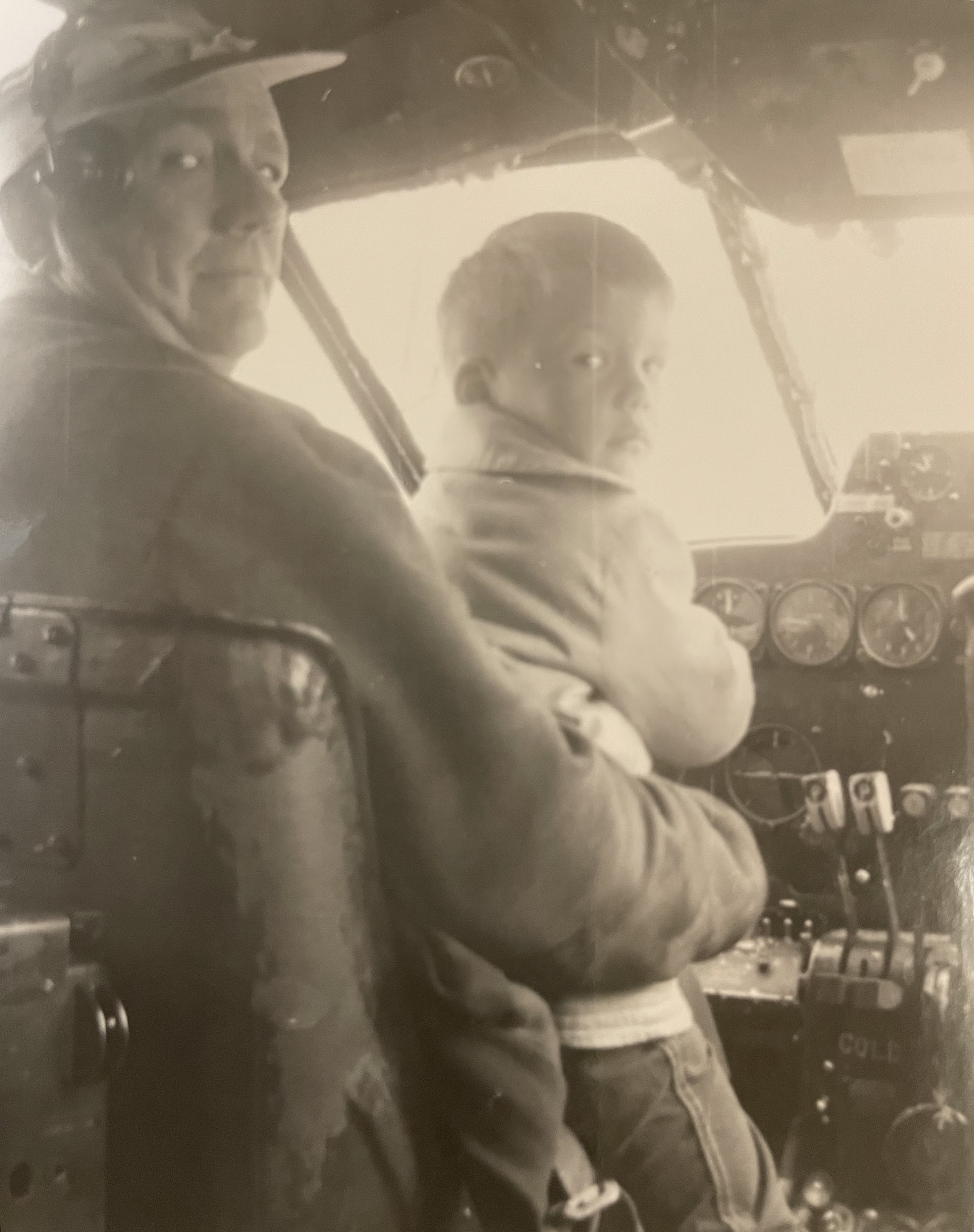
Anyone who had flown with Dad said that he was a fantastic pilot. Luck sure wouldn't have been nearly enough to get him through three decades of the most dangerous flying on the planet, in remote locations and through terrible weather. He fell in love with flying and then couldn't get it out of his blood. Mom talked about how in his later years he would drive around and around the block before going into the doctor's office for his annual pilot's physical, worried that maybe this time he wouldn't pass and then wouldn't be able to fly any more. He never did give up flying.